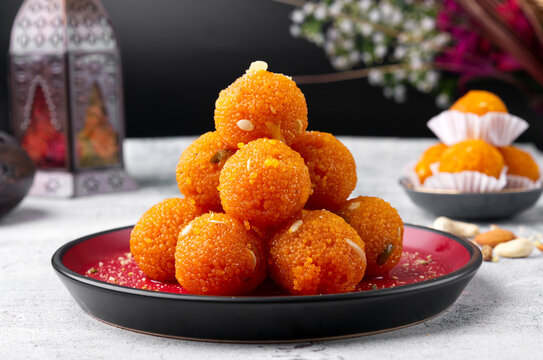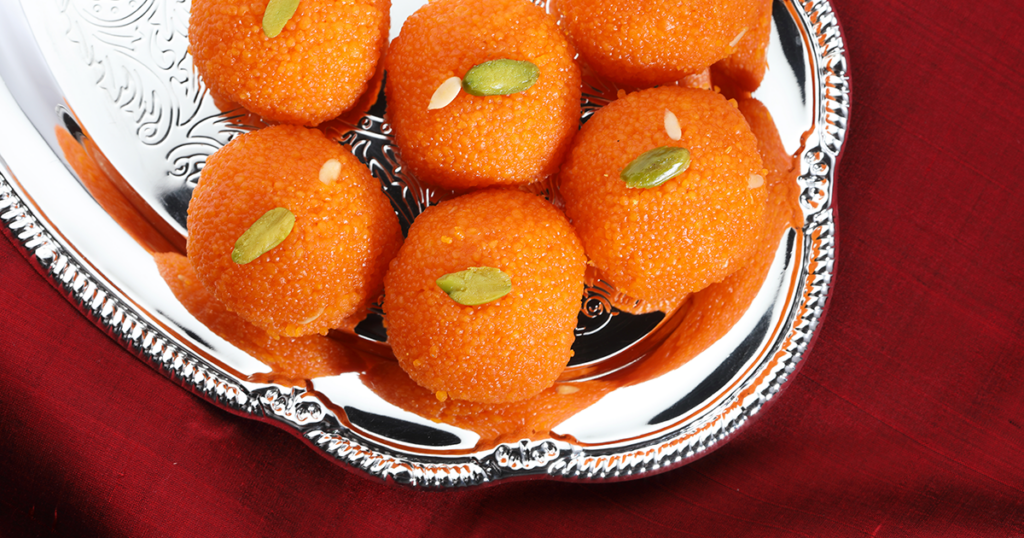Among the many mouthwatering sweets found across India, Laddoo holds a special place. These round, golden treats are more than just desserts—they’re a symbol of celebration, tradition, and pure indulgence. Whether it’s a festival, a wedding, or a casual craving for something sweet, laddoos never fail to impress.
In this guide, we dive deep into the world of laddoos—exploring their history, types, cultural relevance, and even how many you can expect in 1 kilogram. If you’ve ever been curious about this beloved Indian sweet, you’re in the right place.
The Allure of Laddoo

Table of Contents
The word Laddoo (or Laddu, Ladduku, Ladduvu) refers to a round, often hand-rolled sweet made from a blend of ingredients like flour, ghee, sugar, and aromatic spices. What makes laddoo so universally loved is its versatility. Some are soft and melt-in-your-mouth, while others are crispy and crunchy on the outside.
They’re often enriched with nuts, cardamom, saffron, and sometimes even edible silver leaf (varak)—adding a luxurious touch. The combination of texture, flavor, and fragrance is what makes laddoo an irresistible delight.
Varieties of Laddoo
India is a land of diversity, and that shows in its sweets too. Here are some of the most popular laddoo varieties:
1. Besan Laddoo
Made from roasted gram flour (besan), ghee, and sugar. Known for its rich aroma and smooth texture.
2. Motichoor Laddoo
Tiny gram flour pearls are deep-fried, soaked in sugar syrup, and rolled into balls. A favorite during festivals like Diwali.
3. Boondi Laddoo
Similar to motichoor, but the pearls (boondi) are larger and often found in temple prasad offerings.
4. Coconut Laddoo
Made with desiccated coconut and condensed milk or jaggery. This version is often found in South Indian households.
5. Rava Laddoo
Semolina (rava), sugar, and ghee form the base of this laddoo. It’s quick to prepare and deliciously soft.
Each region of India has its own twist—whether it’s Til Laddoo in Maharashtra or Maa Laddoo in Tamil Nadu.
Laddoo in Celebrations and Festivals
Laddoos are more than just sweets—they are cultural icons. No major Indian festival is complete without them. Here’s how they feature prominently:
- Ganesh Chaturthi: Lord Ganesha is believed to love laddoos, especially Modak and Besan Laddoo.
- Diwali: Boxes of laddoos are exchanged between family, friends, and neighbors.
- Weddings & Baby Showers: Laddoos symbolize good luck, fertility, and abundance.
- Religious Offerings: Temples often distribute laddoos as prasad, considered sacred.
In short, laddoos bring people together, sweetening life’s most cherished moments.
Purchasing Laddoo: Understanding Quantities

A commonly asked question is:
How much is 1 kg in laddu?
The answer depends on the type and size of the laddoo. But generally speaking:
- Standard-sized laddoos (like motichoor or besan):
🟡 Around 8 to 10 pieces per kilogram - Smaller laddoos (such as boondi or miniature coconut laddoos):
🟡 Around 12 to 15 pieces per kilogram - Large or specialty laddoos (temple-style or filled varieties):
🟡 Might be 5 to 7 pieces per kilogram
Keep in mind that weight includes sugar, ghee, and add-ons like nuts. If buying from a sweet shop, always ask about the number of pieces in 1 kg before ordering.
Where to Get Authentic Laddoo Today
Whether you’re craving laddoo during a festival or just looking to satisfy your sweet tooth, it’s essential to find trusted sources for quality and taste.
You can explore Indian Food Guide to discover Indian sweet shops, laddoo brands, and authentic recipes. Their curated lists and guides make it easier to find the best laddoos—whether you’re in India or abroad.
Easy Besan Laddoo Recipe (Makes 10-12 laddoos)
Ingredients:
- 1 cup besan (gram flour)
- 1/4 cup ghee (clarified butter)
- 1/2 cup powdered sugar (adjust to taste)
- 1/4 tsp cardamom powder
- 2 tbsp chopped nuts (cashews, almonds – optional)
Instructions:
1. Roast the besan
- Heat a heavy-bottomed pan on low heat.
- Add ghee and let it melt.
- Add besan and stir continuously on low flame.
- Roast until it turns golden brown and gives off a nutty aroma (about 10–12 minutes). Avoid burning.
2. Cool and mix
- Turn off the heat and let the mixture cool slightly (not completely).
- Add powdered sugar and cardamom powder.
- Mix thoroughly to form a smooth, slightly sticky dough.
3. Shape into laddoos
- While the mixture is still warm, take small portions and roll into round balls using your palms.
- If using nuts, press a few pieces into each laddoo or mix them in before shaping.
4. Serve or store
- Let them cool completely before storing in an airtight container.
- These laddoos stay fresh for up to a week at room temperature.
Pro Tips:
- Roast patiently: Undercooked besan tastes raw. Stir continuously on low heat.
- Use fresh ghee: For the best aroma and texture.
- Flavor twist: Add a pinch of saffron or rose water for a festive touch.
FAQs About Laddoo
1. What is laddoo made of?
Laddoo is typically made from ingredients like gram flour (besan), semolina (rava), coconut, or boondi. These are combined with ghee, sugar, and flavored with cardamom, nuts, and sometimes saffron.
2. How many laddoos are there in 1 kg?
The number of laddoos in 1 kg varies based on their size and type. On average, you can expect 8 to 10 medium-sized laddoos or 12 to 15 smaller ones in a kilogram.
3. Is laddoo healthy?
Laddoo can be part of a balanced diet if eaten in moderation. While they are rich in calories due to ghee and sugar, ingredients like nuts, jaggery, and gram flour also provide protein, iron, and healthy fats.
4. What are the different types of laddoo?
Some popular types include:
- Besan Laddoo – made with gram flour
- Motichoor Laddoo – made with fine boondi pearls
- Boondi Laddoo – made with larger boondi
- Coconut Laddoo – made with grated coconut
- Rava Laddoo – made with semolina
5. Can I make laddoo at home?
Yes, laddoos are easy to make at home. Basic ingredients like flour, ghee, and sugar are commonly used. There are many step-by-step recipes online for beginners.
6. Why is laddoo offered in temples?
Laddoos are considered auspicious and are often offered to deities during prayers. For example, Motichoor laddoo is famously offered to Lord Ganesha, who is believed to love them.
7. What is the shelf life of laddoo?
Homemade laddoos usually last 5–7 days without refrigeration. Store-bought laddoos, especially those made with preservatives, may last up to 10–15 days depending on ingredients.
8. Is laddoo gluten-free?

Some types, like besan laddoo or coconut laddoo, are naturally gluten-free as they do not contain wheat. Always check the ingredients if you have gluten sensitivity.
Looking for authentic Indian groceries in Australia? Visit Swagath Foods at 5/29 Dunlop Road, Hoppers Crossing, VIC 3029, and explore a wide range of quality spices, snacks, and fresh produce.
Conclusion
Laddoo is more than just a sweet—it’s a celebration of tradition, love, and joy. From childhood memories to sacred rituals, this golden sphere has touched every corner of Indian life. The next time you get a chance, indulge in one. Let its taste tell you a story older than time itself.
Because when it comes to Indian sweets, nothing delights like a laddoo.